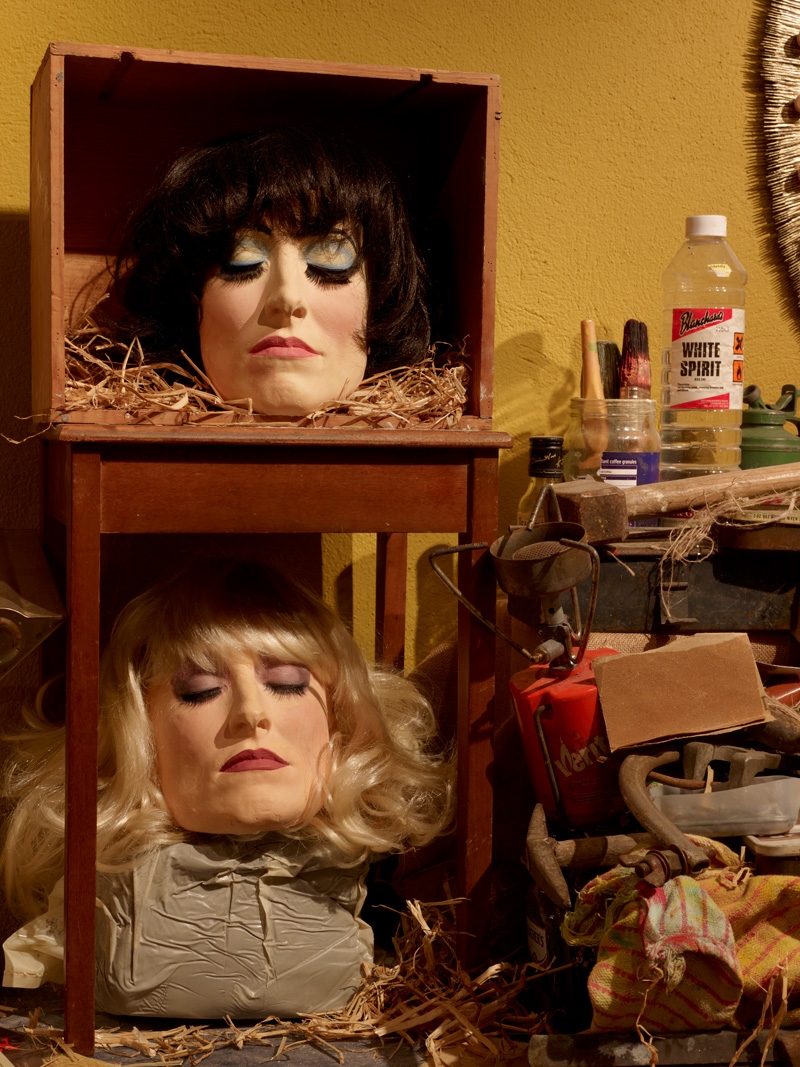Artworks based on art-historical in-jokes are rarely all that funny. Certainly not ‘LOL’ in the manner of Mel Brimfield’s tragicomic channelling of the Pygmalion myth at Ceri Hand’s new London space. While there are many layers, of varying obscurity, to her multimedia metanarrative on the artist/muse dynamic, Brimfield’s sociological framing and direction of these characters as performance subjects serves to broaden the remit of what could be perceived as simply art about art.
Brimfield is known for time-based and performance works in which she melds high-art and light-entertainment sensibilities to challenge the conventions of both. One expects to find the artist in the photographs and films of tortured male geniuses (Jackson Pollock, Vincent van Gogh) and marginalised women (Lee Krasner, artist and wife of Pollock, jazz chanteuse Gwyneth Herbert) presented. But despite the Cindy Sherman-portrait styling, she isn’t there. That Brimfield has returned to her familiar cast of performers (Dickie Beau, Joanna Neary and Tony Green) cements the notion of these works as performances of performances of modernist figureheads.
In Jackson (After Ed Harris) (2012), on a TV monitor, drag performer Beau mimes the angry, balding Pollock, as portrayed by Ed Harris in his self-directed biopic Pollock (2000). Brimfield has reduced the script (voiced by Green) to a 20-minute expletive-loaded rant during which the drunk artist – here a curious mix of The Simpsons’s Krusty the Clown, Pee-wee Herman and John McEnroe – rails against Picasso and women. Beau undergoes another transformation to become Vincent (After Kirk Douglas) (2012) in the basement. Again, he lip-synchs to Green’s reading (of Douglas’s lines in the 1956 biopic Lust for Life), but in this case the tremulous musical score and over-theatricality of the actor’s androgynous comic turn (think Douglas as Vincent in drag as Sherman’s Tippi Hedren) mess with the senses enough for one to engage with the subject’s vulnerability – redolent, perhaps, of a junkie chasing spare change.
However well-observed the ‘arty’ clutter of Brimfield’s studio – and gallery-style sets (a mix of romantic, kitchen-sink and cringe-worthy details) in the lower gallery, the real treasure here is the Alan Bennett-indebted Clement Greenberg – Lee Krasner = Jackson Pollock (2011). Brimfield’s writing talent is showcased to perfection by Neary’s longsuffering Home Counties version of Krasner: “I shudder to think what havoc I may have inadvertently wreaked on Jackson’s muse and the future of American Modernism by leaving that stuff [Krasner’s paintings] so obtrusively stacked under the sofa…” It’s with a wry smile (albeit twisted) that Brimfield acknowledges the clichés (and the existing truisms) of the artist in its male or female cultural persona. This is a purposely secondhand response to the masculine mythos of creativity: these are not original caricatures (or caricatures of originality), nor is the artist staking out a new territory for gender studies; instead it’s the processes of characterisation and the staging of critique that are in fact under inspection.
This article first appeared in the October 2012 issue.
